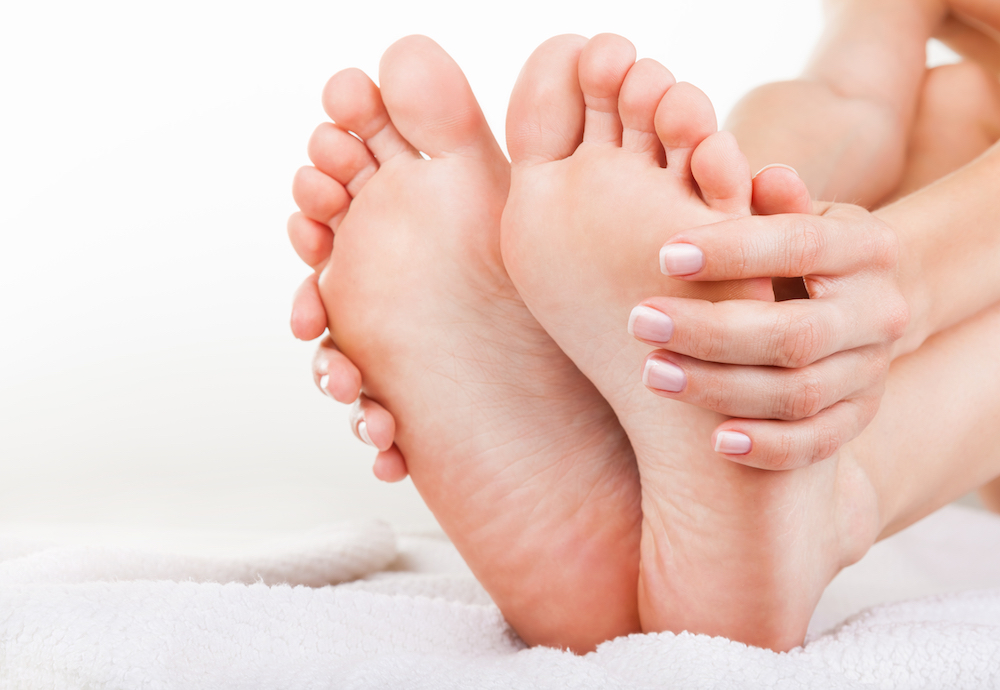
Eric Tan, MD, an orthopedic surgeon at Keck Medicine of USC, walks you through treatment options for bunions and hammertoes.
Do your feet hurt when you wear shoes? Do you have a bump on your toe? Or has one of your toes started to overlap another? If you said yes, you may be experiencing the side effects of a bunion or hammertoe.
A hard, painful bump that forms on the joint at the base of the big toe is called a bunion, whereas a hammertoe is a foot condition in which the middle joint of a toe abnormally bends, resembling a hammer.
Here Eric Tan, MD, an orthopedic surgeon at Keck Medicine of USC, shares the steps you should take to get your feet checked out and what you should consider before getting surgery for bunions and hammertoes.
What can I expect during a bunion and hammertoe consultation with an orthopedic doctor?
1. History and physical examination to evaluate your current state of health
2. Assessment of the bunion or hammertoe

3. Observation of how your foot fits into your shoe
4. Examination of how the joint moves to see if there are any indications of arthritis
5. Review of your x-rays to see the deformity and quality of the bone
6. A thorough discussion of all the findings to determine the best treatment for you
What are some common treatment options for bunions and hammertoes?
In most cases, your treatment would begin with nonsurgical options, such as taping down the toes or stretching them. Sometimes, maintenance is all you need, and that can last for many years.
However, if your condition does not respond to these therapies, or if you have significant pain and deformity, you may need to consider more progressive treatment, such as surgery.
There are many types of splints and spacers, including the bunion stretcher, that may be used. However, once a bunion starts, it cannot be stretched back. The splints and stretches may temporarily relieve your symptoms, but they don’t lead to a lasting correction the way surgery can.
How do I know if bunion or hammertoe surgery is right for me?
What matters most is your level of comfort. If you work behind a desk and are not as active, it may be better to watch and wait to see how the bunion and hammertoe progress before considering surgery. However, if you are on your feet a lot, then surgery may be the right choice for you. If your bunion or hammertoe becomes infected, or involves a more worrisome complication, surgery may be necessary to fix the problem.
If you choose surgery as an option, it’s important to select a foot surgeon who has experience in correcting these complications to get the best results and to prevent a recurrence of the bone deformity. Your surgeon will help you determine which surgery is the right one to meet your individual needs.
What can I expect after bunion or hammertoe surgery?
Once your surgery is done, your foot is placed in a dressing, and you’re given a postoperative, hard-soled shoe.
The next day, you are able to walk on the heel and the outside of the foot, but it is recommended that you avoid putting weight on the part that was operated on for about three to four weeks.
You may also have pins sticking out of the end of your toes that will need to be cleaned. To help avoid putting weight on the part that is operated upon, crutches are provided for additional support.
After four weeks, you can start walking more flat-footed and independently off of the crutches. The pins, if present, will be removed at this time. Then at about six to eight weeks, you can wear regular shoes.
Will my bunion or hammertoe come back after surgery?
There is a very low risk of a bunion or hammertoe coming back. If any sort of bunion correction is done, there is a small chance that it could potentially come back 15 or 20 years later, but this is uncommon.
If you have a severe bunion, it may involve fusion of a few joints. If you choose fusion, there is almost no chance of recurrence, but you also lose motion of the joint. If you opt for realignment of the bone instead, you may be able to preserve the motion of the joint. This usually lasts for many years, though there is a small risk that over time, the problem could slowly reoccur.
One common complication you may experience later is arthritis. If you have any concerns about arthritis, or any other potential complication, consult with your foot surgeon.
Topics
